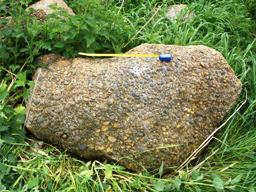
Dr David Jenkins, Chief Geologist with BP in Aberdeen, was flushed with the company’s recent successful discovery of the giant Forties oilfield when, in November 1972, he came to Edinburgh to give a talk on North Sea exploration. I was his young host, then striving to be recognised as a specialist in sandstones formed in deep water, carrying out research at Edinburgh University. I had recently returned from my doctoral research with Raymond Siever at Harvard University, in an atmosphere where no one seemed snooty about either money or knowledge. Collaboration between geologists in universities and industry seemed there to be a natural part of everyday life, in a fashion then emulated in Britain only by a few pioneers such as (ex-Shell) Harold Reading at Oxford University.
A tyro is characteristically proud of his specialist abilities – in my case, to distinguish between different types of sandstone. Fresh from camping in a small green tent amidst the turbidites of the Eocene Tyee Formation of the Oregon Coast Range, I was certainly not snooty about applying knowledge to practical matters. After all, the oil industry had paid for the tent. I was also more than happy to supplement a junior lecturer's salary. I listened keenly to the Chief Geologist and offered what I considered to be some quite nifty ideas over dinner with David and Evanthia Jenkins at Denzler's Swiss Restaurant.
Jenkins told me that there was an unresolved debate within BP concerning the deposition of the Forties reservoir sandstones: deep water or shallow water? “The depositional environment… is still under study…” (Thomas & others, 1974, p.400). Although he did not discuss it in the restaurant that evening, Jenkins already had a line of evidence indicating a relatively deepwater setting. I first became aware of this at a remarkable conference convened in Bloomsbury in November 1974. At this now famous meeting, immaculately suited oil company men mingled with dishevelled British academics. For the first time the companies were sharing previously secret information and ideas about the North Sea.